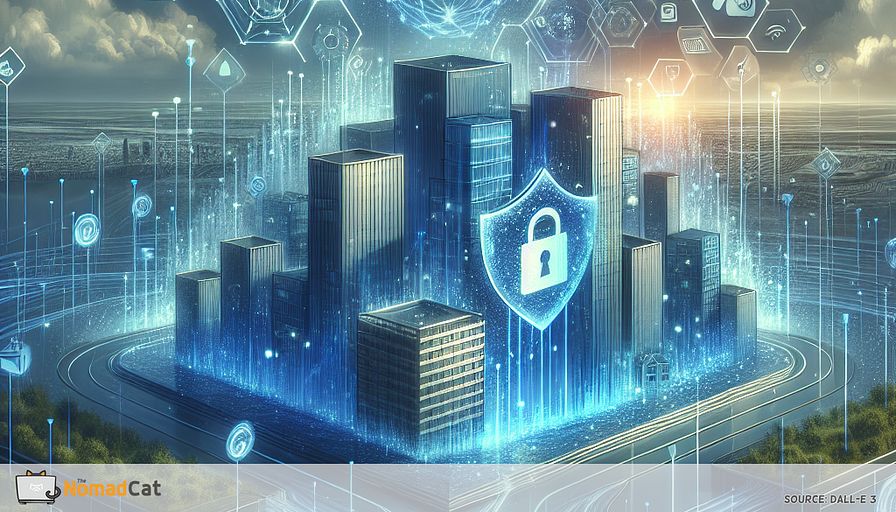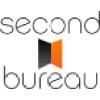Abstract:
The article explores how startups can leverage the Internet of Things (IoT) to create smart workplaces while effectively navigating European Union regulations. It emphasizes the importance of understanding key regulations like the General Data Protection Regulation (GDPR), the Radio Equipment Directive (RED), and the EU Cybersecurity Act, which influence IoT device development and usage. Compliance is portrayed not just as a regulatory necessity but as a strategic advantage that fosters innovation and trust. The article highlights security challenges such as weak authentication and insecure communication channels, recommending best practices like end-to-end encryption and regular updates to mitigate risks. It also suggests exploring innovative technologies like blockchain and hardware-based security for enhanced protection. By showcasing successful examples like Secucloud and Tado°, the article illustrates how aligning innovation with compliance can lead to market credibility and growth. To future-proof IoT integration, it advises staying informed about regulatory changes and adapting to evolving security threats through continuous monitoring and flexible strategies. Practical steps for tech executives include conducting risk assessments, implementing robust device management, and using tools like OneTrust for GDPR compliance to maintain a strong security posture.
The Internet of Things (IoT) holds great promise for startups aiming to create smart workplaces. However, navigating European Union regulations can be challenging, making it essential to understand these rules. From data protection to cybersecurity, these regulations influence how IoT devices are developed and used. This guide will help you grasp key EU regulations, turning compliance into an opportunity for innovation and trust-building. Aligning your strategies with these standards ensures your startup remains competitive.
Navigating the EU regulatory landscape for IoT in startups
IoT presents significant opportunities for startups, particularly in smart workplaces. Understanding EU regulations is crucial for compliance and success. Here's how to align your strategies with EU rules, while also enhancing operational efficiency and employee productivity through IoT.
Key EU regulations impacting IoT
The General Data Protection Regulation (GDPR) significantly influences IoT devices. It focuses on protecting personal data, requiring transparency and user consent. IoT solutions need privacy measures built in from the start, along with Data Protection Impact Assessments, ensuring users can access their data. Mastering GDPR is crucial for compliance and building user trust.
The Radio Equipment Directive (RED) is critical for IoT devices using radio frequencies. It ensures devices meet health, safety, and technical standards. Startups must design safe devices that avoid interference and meet EU market needs, supporting innovation while protecting public health.
The EU Cybersecurity Act sets a framework for IoT device security. It promotes certification, demonstrating a commitment to secure practices. Cybersecurity certification boosts the trustworthiness of IoT solutions and gives startups an edge.
Implications for IoT deployment
Understanding these regulations is crucial for planning and executing IoT projects. Compliance affects everything from design to implementation in smart workplaces. With this knowledge, startups can build robust, adaptable IoT solutions that enhance operational efficiency and employee productivity, easing deployment challenges.
While compliance requires effort, the benefits are significant. By adhering to regulations, startups enhance security and customer trust, turning compliance into a strategic advantage. This leads to credibility and loyalty, as startups tackle inherent security vulnerabilities.
Identifying IoT security challenges
Common IoT security issues
IoT devices offer great potential but also pose security concerns. Weak authentication is a major issue, with many devices lacking strong mechanisms, making them vulnerable. Studies show that about 80% of IoT devices lack strong passwords, and 70% are prone to unauthorized access.
Another problem is insecure communication channels. Much IoT traffic is unencrypted, exposing it to interception and data breaches. Securing these channels is crucial for protecting data integrity.
Lastly, many IoT devices suffer from a lack of regular updates and patches, leaving them open to cybercriminals. Regular updates are essential for fixing vulnerabilities and maintaining security.
Impact on startups
IoT security vulnerabilities can severely harm startups. Data breaches lead to financial and reputational damage, with costs including fines and lost customer trust. GDPR penalties are a strong deterrent, emphasizing the need to prioritize security.
Operational disruptions also affect startups, undermining customer trust and business continuity. Vulnerabilities cause downtime, impacting product delivery and satisfaction. Maintaining a strong security posture is essential to prevent these impacts.
Strategies for compliance and risk mitigation
Navigating IoT security and compliance is crucial for startups aiming to meet EU standards. Strategic measures can mitigate risks and enhance security and trust, while also balancing scalability with speed.
Best practices for compliance
End-to-end encryption and regular updates are fundamental for IoT security. Embrace privacy by design for GDPR compliance:
- End-to-end encryption: Use protocols like TLS to protect data during transmission.
- Regular updates: Implement systems to close security gaps proactively.
- Privacy by design: Include privacy from the start, not as an afterthought.
- Data Protection Impact Assessments (DPIAs): Regularly assess privacy impacts of new technologies.
Privacy by design anticipates and prevents privacy issues, aligning with user expectations for security.
Innovative security technologies
Exploring new technologies can boost IoT security. Blockchain is promising, enhancing data integrity with its transparent, immutable ledger. It secures data exchanges, reducing unauthorized access risks.
Hardware-based security, like secure boot, adds protection. Secure boot verifies firmware integrity, preventing malicious software execution. Trusted Platform Modules (TPMs) securely store cryptographic keys, protecting credentials.
These technologies help startups defend against security challenges and ensure compliant deployments.
Leading the charge in European IoT innovation
European startups leading the way
Startups like Secucloud and Tado° are pioneers in IoT innovation. Secucloud offers cloud-based security platforms aligned with GDPR, proving compliance can attract privacy-focused businesses. Reflecting on my experience with Secucloud, their commitment to security has been instrumental in gaining customer trust.
Tado° is known for smart thermostats with strong encryption, protecting user data. Their approach highlights the importance of data security alongside innovation. Observing Tado°'s growth, it’s clear that integrating security into their core offerings has been key to their success.
Lessons learned
Successful IoT projects, like those by Secucloud and Tado°, show compliance as a strategic initiative. They integrate security into core solutions, building trust in competitive markets.
Balancing innovation with compliance involves rigorous testing and updates. By focusing on both technology and regulations, these startups support sustainable growth.
Future-proofing IoT integration
Planning for regulatory changes
Regulatory landscapes are dynamic, making staying updated crucial. Engaging with industry associations and attending conferences keeps startups informed of trends and updates, fostering proactive compliance.
Adaptive compliance strategies involve regular audits and updates, aligning with new requirements. Key steps include:
- Implementing compliance checkpoints in product development
- Continuously updating policies
- Consulting legal experts for complex regulations
These strategies help startups address regulatory shifts efficiently.
Adapting to evolving threats
Continuous monitoring and threat detection are essential. Advanced tools and regular vulnerability reviews keep IoT systems secure.
A flexible security framework adapts to new threats. Startups should focus on scalable solutions, future-focused technologies, and updated protocols.
By staying adaptable, startups protect their systems and prepare for future innovations.
Actionable steps for tech executives
Securing IoT integration is complex but achievable. Here's how tech executives can ensure security and compliance.
Practical steps and checklists
- Conduct a comprehensive risk assessment: Identify risks for each IoT device.
- Implement robust device management policies: Regular updates and patches.
- Set up strong authentication protocols: Use multi-factor authentication.
- Ensure secure communication: Enforce encryption for data in transit.
These steps lead to secure IoT deployment, acting as a reliable guide.
Network security strategies are vital too. Segment networks for IoT devices and enforce role-based access control to protect sensitive areas.
Tools and resources
Tools like OneTrust and TrustArc help with GDPR compliance, managing consent and conducting assessments. They simplify data protection.
Adopt security frameworks like ISO/IEC 27001, providing a structured approach to information security management.
With these tools and frameworks, tech executives maintain a robust security posture, navigating IoT integration complexities effectively.














